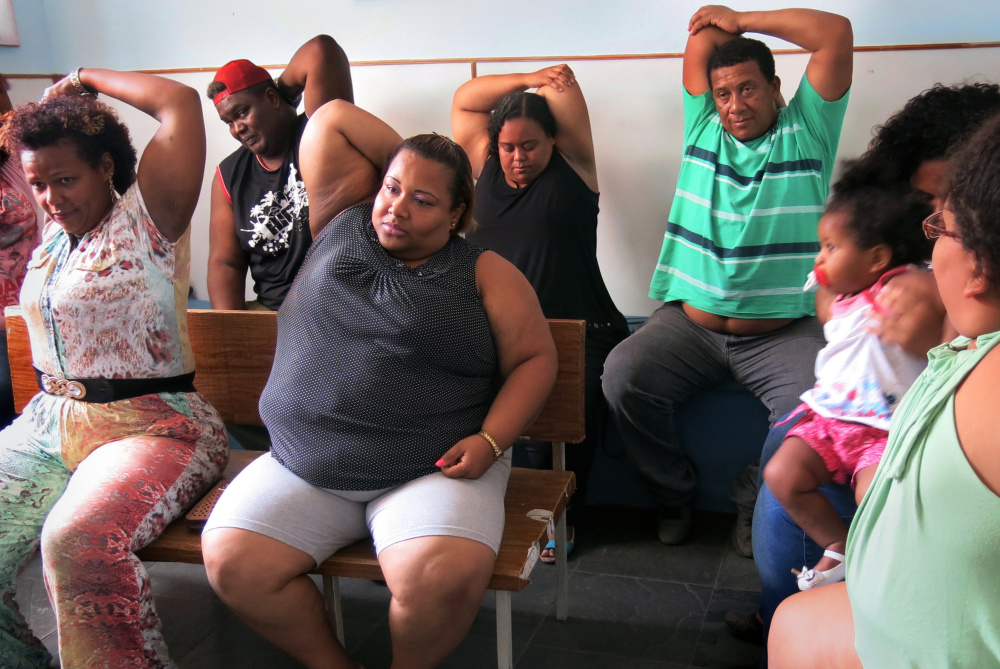RIO DE JANEIRO — Brazil has been bogged down in a recession for over two years but one business is still growing.
Fast food. And as it expands, so does the country’s obesity problem.
Brazil’s government won worldwide plaudits for bringing 36 million people out of poverty during 13 years of rule by the leftist Workers’ Party, which ended in August. As the economy boomed and consumer spending followed, some people even joined a lower middle class which by 2014 had swelled to almost 60 percent of the population.
But the progress came at an unexpected cost: an explosion in the number of overweight people, who now account for 57 percent of Brazil’s population — with 1 in 5 obese.
Doctors, nutritionists and other specialists say the weight gain is particularly pronounced among Brazilians with low earnings — many of whom swapped precarious lives where food was often scarce for better incomes and cheap, abundant junk food and processed food.
“These are people who spend a lot of time at work or on transport. They do not have money or conditions to do physical activity,” said João Regis, an endocrinologist at Rio’s Clementino Fraga Filho hospital, part of its federal university. “They are not educated about obesity.”
The rise in weight problems creates a huge burden for Brazil’s stretched public health system, which is grappling with escalating levels of diabetes, hypertension and heart disease.
Rising obesity is a global phenomenon, but it is increasingly affecting countries in Latin America and Caribbean. The percentage of overweight Brazilians was already rising when Luiz Inácio Lula da Silva became president in 2003, ushering in an era of prosperity. Since then it has kept climbing for men and rocketed more than 40 percent for women. One in 3 children are overweight.
In 1975, Brazil had the world’s ninth largest population of underweight men. By 2014, it was ranked third globally for obese men, after China and the United States, according to a study in the Lancet, a British medical journal. Nearly 1 in 4 women are obese.
Rio bar owner Veronica Cabral, 28, weighs 368 pounds, and her 8-year-old daughter, Debora, is classified as “seriously obese.” Cabral grew up in a “very poor” family in Recife in Brazil’s northeast. But, she said, “We lived by the beach, we fished, we had a garden and vegetables and fruit in the yard.”
When she was 13, her mother moved her and her four siblings to Rio. Two years later Lula came to power, and the lives of millions of Brazilians like Veronica began to improve. As Brazil’s economy roared thanks to rising commodities prices, a new, lower-middle class was born and encouraged to spend with easy credit. Many Brazilians benefited from a welfare scheme for low-income women who agreed to send their children to school and get them vaccinated.
“Life started to get better,” Cabral said.
Everybody in her family got jobs. For Brazilians like her who had grown up with little money, grabbing fast food and a soda at McDonald’s or a Brazilian burger chain like Bob’s was desirable and affordable.
“Everything we could not do in childhood we did as adults,” she said. “Eat what you want. You go to the mall, you go to McDonald’s, you go to Bob’s.”
Send questions/comments to the editors.



Success. Please wait for the page to reload. If the page does not reload within 5 seconds, please refresh the page.
Enter your email and password to access comments.
Hi, to comment on stories you must . This profile is in addition to your subscription and website login.
Already have a commenting profile? .
Invalid username/password.
Please check your email to confirm and complete your registration.
Only subscribers are eligible to post comments. Please subscribe or login first for digital access. Here’s why.
Use the form below to reset your password. When you've submitted your account email, we will send an email with a reset code.